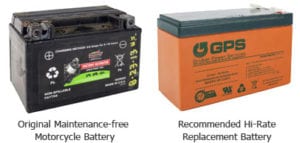Could this be the first Tesla Roadster? May 23, 2017
Tzero Story
Tesla Motors was created based on inspiration provided by an electric sports car, called the Tzero. It was developed by a small company called AC Propulsion Systems founded by Alan Cocconi in San Dimas, California in 1992. Armed with federal grant money to build an electric sports car, they revealed three Tzero cars in 1997 which was a fully electric sports car with  performance specs rivaling high performance exotics of the time. In fact, legend has it that one of these cars beat a supercar from that era, the Lamborghini Countach.
performance specs rivaling high performance exotics of the time. In fact, legend has it that one of these cars beat a supercar from that era, the Lamborghini Countach.
Only three were built using three phase AC Induction Motors, and Optima Spiral Wound lead acid batteries, in the space normally occupied by doors. There were a total of 28 of these 12 volt batteries, twelve in each door cavity, and four mounted in the rear behind the seats, underneath the power inverter.
An all electric drivetrain was merged into a Piontek Sportech fiberglass kit car. To get into the car, required climbing over the stationary doors, and settling into Recaro racing seats.
Only one Tzero would be converted to Lithium Ion batteries extending the 80 mile range to 240, commissioned by Martin Eberhart, one of the two early founders of Tesla Motor Company. This upgraded Tzero set the design criteria for the Tesla Roadster which had almost identical specs with a 240 mile range and 4 second 0-60.
In 2017, Gruber Motor Company (GMC) acquired the only functioning Tzero left, which was paraded to EV events, on display at Gruber Motor Company at their Phoenix Arizona research and test facility, and used to reverse engineer early EV analog technology. A fire destroyed the building it was housed in along with seven Tesla Roadster May 5, 2017.
The Tzero was the inspiration for the Tesla Roadster, and it was actually what was shown to investors to get support to move forward with the Roadster. AC Propulsion supplied the initial analog electronics and drivetrain for the Roadster before Tesla decided to convert the electronics to digital and create their own proprietary powertrain.
I had the privilege of driving this unique car. It was way ahead of its time with V2G (Vehicle to Grid) capability, and variable regenerative braking, and I found myself using the maximum setting rarely needing a brake pedal.
Driving the Tzero was much like my daily driver Roadster at the time. The car was nimble, responsive, and would pin you into the Recaro Racing Seats in a heartbeat. The car generated attention and a myriad of questions wherever it went.
A humorous sidenote is that the Tzero’s sported a trailer hitch. Although quite capable from a torque and power standpoint of towing, the purpose of the trailer hitch was to pull a 500 CC Kawasaki Engine Generator to provide DC power in case the battery range was exhausted. The trailer was called the “Long Ranger”. While in use, any zero carbon advantage was of course erased. This EV was designed in 1997, well before charging stations.
Another interesting Tzero event story is a run up Pikes Peak, for the Pikes Peak International Hill Climb, with a paved track measuring 12.42 miles.
Electric cars have featured on and off in the PPIHC since the early 1980s, and the Tzero set out to once again prove an EV could make the climb. Reaching the summit was uneventful and the Tzero did a marvelous job of propelling itself up the 12 mile course, but depleted most of its charge needed for the descent. A ranger station at the summit provided an AC outlet and the car was left to charge for a few hours.
Upon starting the descent, it became apparent the regenerative braking, which was fixed, would be active the entire way down, overcharging and boiling already top charged lead acid batteries.
To solve the dilemna, the driver spent the next two hours driving in circles in a summit parking lot to again discharge the batteries before making the descent.
Why are there two batteries in a Roadster?
The two batteries in a Roadster are a traction battery, or ESS pack which provides propulsion and range, and an instrumentation battery which supplies power to everything else, the displays, all interior electronics, door and trunk locks, window mechanisms, fans, seat heaters, headlights, signals, wiper motor, audio equipment, camera, etc.
You might ask why select a battery technology from 1859 in a state-of-the-art car that utilizes current Lithium Ion battery tech? The primary reason is that old school lead acid batteries will not freeze and can safely charge and discharge safely over an incredibly wide temperature range without being damaged. That’s not true of lithium chemistries.
This small instrumentation battery resides in a crawl space in the front passenger fender and was originally an Absorbent Glass Mat (AGM) Maintenance-Free Motorcycle battery.

Accessibility is poor and a higher grade AGM battery reduces replacement frequency. We recommend replacing this battery every two years with newer technology GPS Hi-Rate Series punch grid plate design batteries instead of the old cast grid plate Motorcycle style for maximum life and performance.
Roadsters sometimes lose their mind.
This can be caused by a number of factors including an instrumentation battery on its way out. As simple and effective system reboot is opening and closing the charge port door 7-10 times which often clears errors and allows you to get to a service center.













